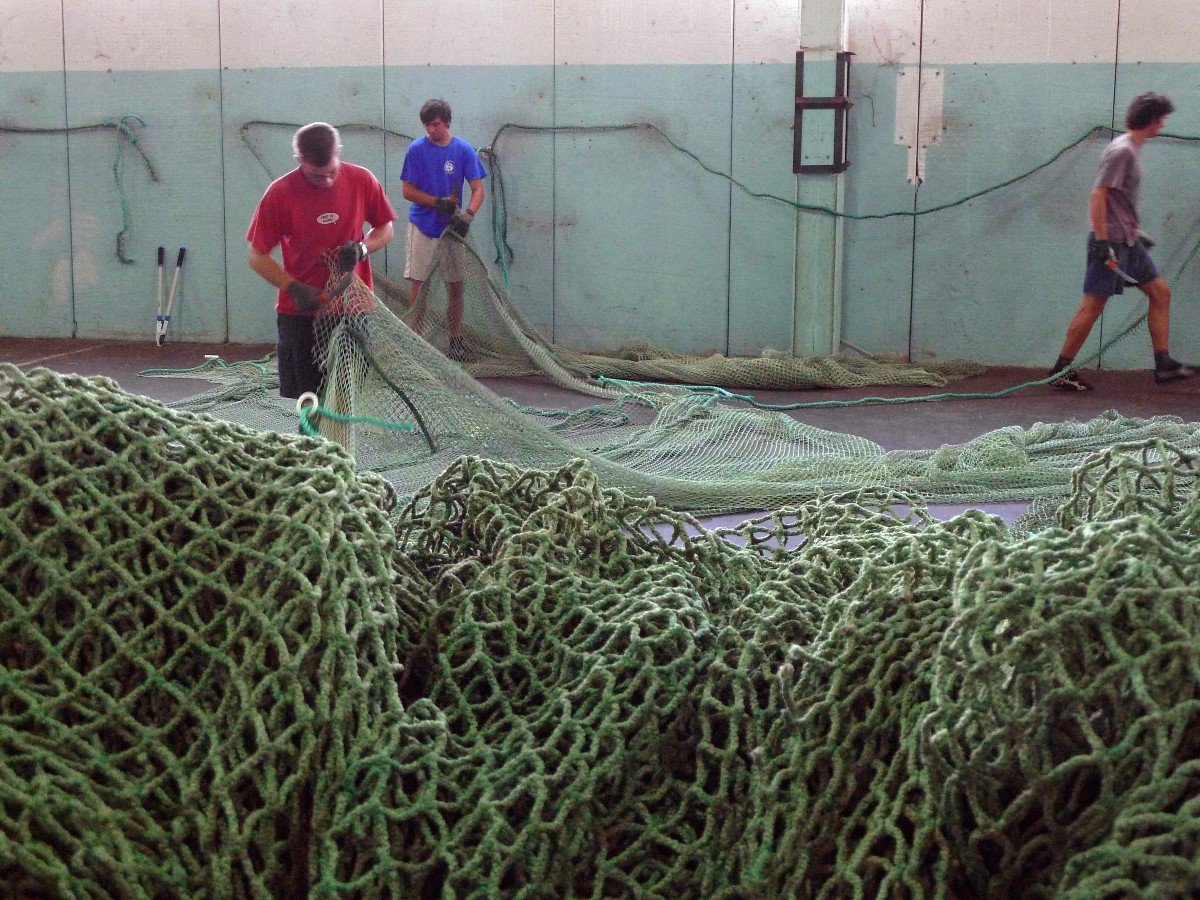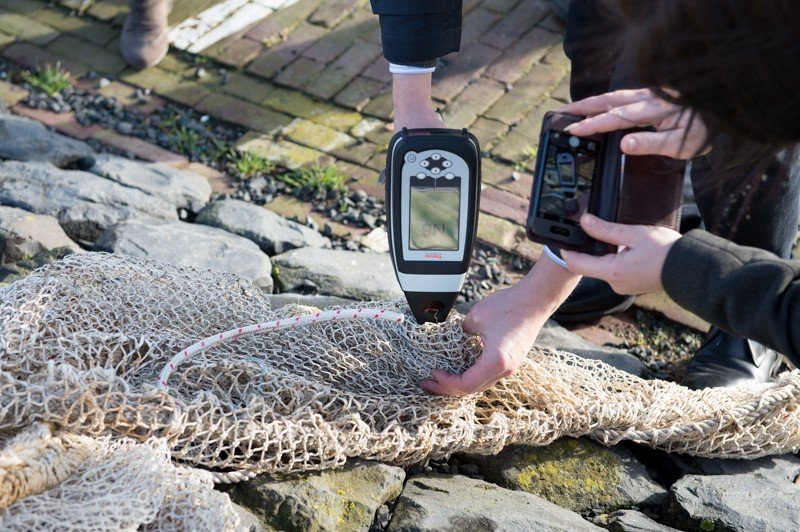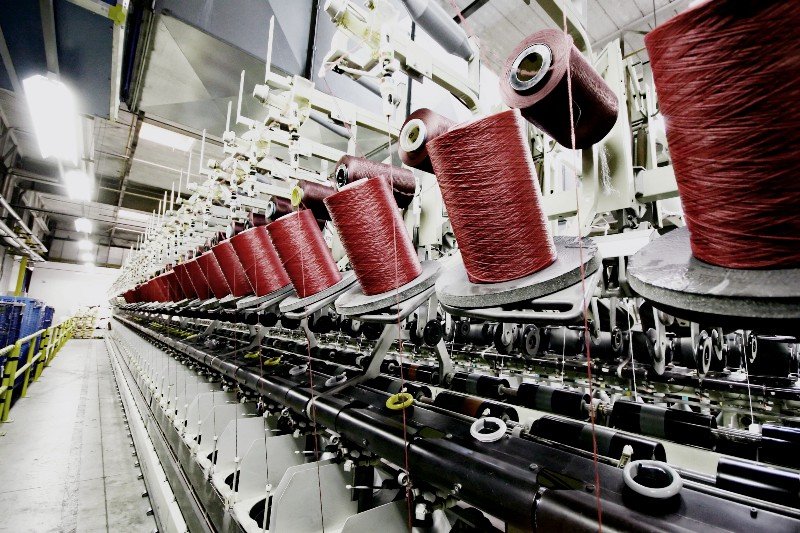From Fishing Nets to Apparel: Innovation from ECONYL Near Lake Garda, Italy
Will Ross, May 9, 2016

Follow the afternoon Ora wind over Lake Garda’s north shore, through the neat rows of olive groves and vines and you’ll come across a small collection of industrial plants hugging the outskirts of the ancient town of Arco. It was here that Italian textile manufacture Aquafil began making synthetic fibres back in 1969, marking the beginning of a dynamic story of growth and innovation in a valley more suited to Steinbeck than to pipes, plumes and pistons. Jump forward to 2016 and Aquafil now own and market one of the textile industry’s most exciting regeneration processes, evidence that the brooding mountains and fertile valley have given life to an entirely new kind of enterprise.
During the first 30 years of its operation, Aquafil focused on sites within the Trentino area and research lab in Berlin, venturing to Slovenia in 1995 with the purchase of a plant processing Bulk Continuous Filament (carpets) and Nylon Textile Filaments out of Ljubljana. In 1999 the acquisition of a plant in Cartesville, Georgia (US) landed Aquafil’s first outpost beyond Europe then in 2007, a factory in Rayon, Thailand was added to the family. But the company’s most recent investment is perhaps its most exciting yet, committing to Slovenia in earnest with a €25m fund and four-year upgrade of the Ljubljana facility. This focus has enabled Aquafil to conduct its own depolymerization experiments and develop an entirely new process to regenerate waste into useful premium yarn for carpets and apparel.
After plenty of trial and error, ECONYL® was finally born in 2011, under its own brand within the Aquafil network. Commenting on just how feasible the process was at the start, CEO Giulio Bonazzi is to the point: “We vastly underestimated the difficulty of this journey and I would say today fortunately because if we had known everything, I don’t know if we would have started… Someone was saying I was crazy. Maybe I was not crazy, simply I didn’t know and I was lucky not to know.”
The regeneration processes that takes place in Ljubljana serves to supply the main plant in Arco with its vital ingredient, Nylon-6. Traditionally, textile manufacturers source their Nylon-6 from Caprolactam, a by-product from crude oil. However with Ljubljana now able to return disused carpets and fishing nets to a clean, reusable polymer, Aquafil are able to create a circular system that meets the economic sustainability standards of the company while contributing a net positive environmental impact.
At the start of the the supply chain, waste carpets and fishing nets are collected from post-consumer and industrial sources and sent to a sorting facility in Ajdovščina in south-west Slovenia. Here the top layer of carpet is stripped and collected while fishing nets are mechanically batched and washed. Ljubljana will then receive the clean nets and carpet shreds, throw them into their system and reduce the polymer to pellets by treating them with extreme heat. Pellets are then transported to Arco for use in new garments and carpets, acting as if they came from new, virgin polymers out of Caprolactam.
For those that need to be convinced by the environmental impact of this process, ECONYL has a suitable track record. During 2015, 100,000 tons of carbon dioxide were saved through regenerating waste materials instead of using virgin sources. This amount of carbon dioxide equates to the same amount of CO2 emitted by a car passing around globe 15,000 times and in terms of energy saving, we’re talking 2m GJ, enough to power Rome for 10 days. But what’s most vital to understand is how the process of regeneration takes products that weren’t design to be recycled or have a long lifespan and enter them into a process which will not only ensure a quality output but also a product that can be easily broken back down when its functional use deteriorates. Commenting on this conscientious shift, Bonazzi states his vision, ‘Not the dream but the target is really not to send anything to landfill and not to take anything from our planet.’

The extraction of Bulk Continuous Filament from carpets is comparably easy when compared with regeneration of fishing nets, which unravel a number of issues during the sorting and cleaning processes. Nitrates attach to the fishing nets during their time submerged in water. These need to be removed, as do any larger crustaceans that have found a home clinging to the nets. In addition, most fishing nets use a copper anti-growth coating to prevent marine life from binding to the fibres and clogging the nets, creating a further impurity that is significant in the context of depolymerization. All these extra considerations mean that nets need to be thoroughly cleaned before being sent to Aquafil’s advanced cleaning facility at Ajdovščina. When Aquafil first started running fishing nets through the Ljubljana plant, they underestimated the importance of the cleaning their input materials, so much so that pipes started to burst. This forced the shutdown and reboot of the operation over three days.
Establishing strong on-the-ground relationships with key partners has been essential for ECONYL when tackling the problem of receiving relevant nets. Identifying alternative, non-nylon threads within a batch of nets has been problematic, leading to the introduction an infrared gun to the sorting process at coastal collection points. The infrared gun stores a database of materials and compares a thread’s reading with true Nylon-6. Chemical labs then provide a more accurate system to assess the type and quantity of material coming in.
Like all great innovation, effects of reintroducing waste has had effects beyond the core problem of a finite resource and reducing inefficiencies. In acting as a founding member of ocean restoration non-profit Healthy Seas, ECONYL creates a link between refuse fishing nets and usable yarn, a key component of the organisation’s #FromWasteToWear directive. As part of their work, Healthy Seas collect ‘Ghost nets,’ redundant fishing nets that have been neglected by fisheries, creating a perpetual threat for reefs and fish. The harvested nets from Healthy Seas are then bundled on the shore and sent across to Aquafil. Similarly, in an unlikely partnership, ECONYL found a Scandinavian partner to transport its nets through the complex, multi-nation overland supply chain in Europe, initiating a dialogue on the importance of trans-national freight when it comes to considering environmental goals on the continent.

While yarn for carpets fits into Aquafil’s primary revenue stream, the creation of a brand behind ECONYL has helped make the company more relevant to apparel companies, most of whom are fast moving towards more ethical sourcing options. Speedo, Kering’s Outerknown and most recently adidas all started using ECONYL yarn. Brands feel comfortable placing their own logo alongside ECONYL’s bold and attractive signage, tokens that are rapidly gaining credibility as knowledge and understanding of nylon regeneration become more widely accepted.
The ECONYL brand is also responsible for promoting a vital message — that the goal for manufacturing should not merely be to ensure products can be recycled but that they are also modular enough to be regenerated. This means no detriment to the quality of the yarn and 100% trust and choice at the consumer end. For instance, repurposed Nylon-6 can still be recompiled to meet the different dyes, thickness and finishes of its carpet market, some 20,000 varieties. With ECONYL, brands no longer need to rely on the goodwill of their customers to put cash behind a material that performs at a lower grade that its original source.
 The story of Aquafil is being etched into the booming landscape of Lake Garda in dynamic ways. Being based in the Autonomous Province of Trentino has its benefits — their policies are some of the most progressive in the EU. Still, Aquafil’s global footprint and pioneering efforts in textiles are being noticed across two large markets, adding life to the ruined remains of Arco Castle and an industry that has for too long ignored its potential meet its environmental responsibilities.
The story of Aquafil is being etched into the booming landscape of Lake Garda in dynamic ways. Being based in the Autonomous Province of Trentino has its benefits — their policies are some of the most progressive in the EU. Still, Aquafil’s global footprint and pioneering efforts in textiles are being noticed across two large markets, adding life to the ruined remains of Arco Castle and an industry that has for too long ignored its potential meet its environmental responsibilities.
For more information on Econyl, visit aquafil.com.